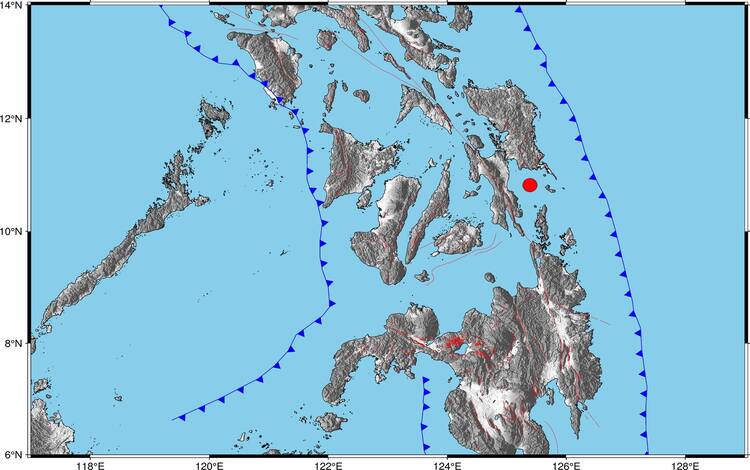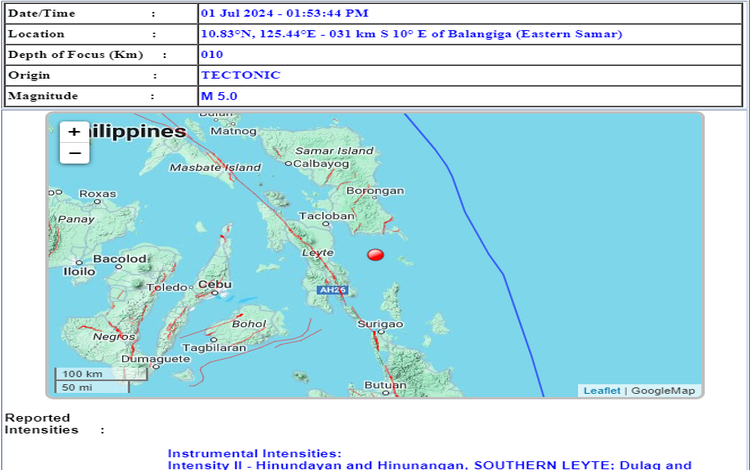On Monday, July 1, 2024, at 1:22 PM, a magnitude 5.0 earthquake rattled Abuyog in Leyte, Philippines. The tremor’s epicenter was pinpointed at coordinates 10.83°N, 125.44°E, approximately 31 kilometers south of Balangiga in Eastern Samar. This significant seismic event has prompted immediate attention and response from local authorities and residents alike.

Shortly after the quake, the Philippine Institute of Volcanology and Seismology (PHIVOLCS) released an official Earthquake Information bulletin, designated as Information No. 1. According to PHIVOLCS, the earthquake’s depth was measured at 10 kilometers. Another notable location was recorded at 10.82°N, 125.39°E, situated 32 kilometers south of Balangiga, highlighting the tremor’s geographic spread and impact area.
Reported Intensities
The earthquake was felt in various locations, with Tacloban City and Palo in Leyte experiencing Intensity II tremors. Residents in these areas reported mild shaking, which, although not severe, was sufficient to cause concern among the populace. Intensity II on the PHIVOLCS Earthquake Intensity Scale typically involves a few people indoors feeling the shaking, especially on upper floors of buildings and suspended objects swinging.
Immediate Response and Safety Measures
In response to the earthquake, local disaster risk reduction and management offices have been mobilized to assess the situation. Initial reports indicate no significant structural damage or casualties, but assessments are ongoing. Authorities are urging residents to stay vigilant and be prepared for possible aftershocks, which are common following a seismic event of this magnitude.
Schools, offices, and establishments in the affected areas have been advised to conduct safety inspections to ensure the structural integrity of buildings. Emergency response teams are on standby to assist if needed, and public advisories have been issued to remind citizens of the necessary safety protocols during and after an earthquake.
Community Preparedness and Resilience
The recent earthquake underscores the importance of earthquake preparedness in the region. The Philippines, located on the Pacific Ring of Fire, is prone to frequent seismic activity. As such, community preparedness and resilience play crucial roles in mitigating the impact of such natural disasters.
Local governments, in collaboration with national agencies like PHIVOLCS, continually conduct earthquake drills and awareness campaigns to educate the public on safety measures. These efforts aim to ensure that communities are better prepared to respond effectively during seismic events.

